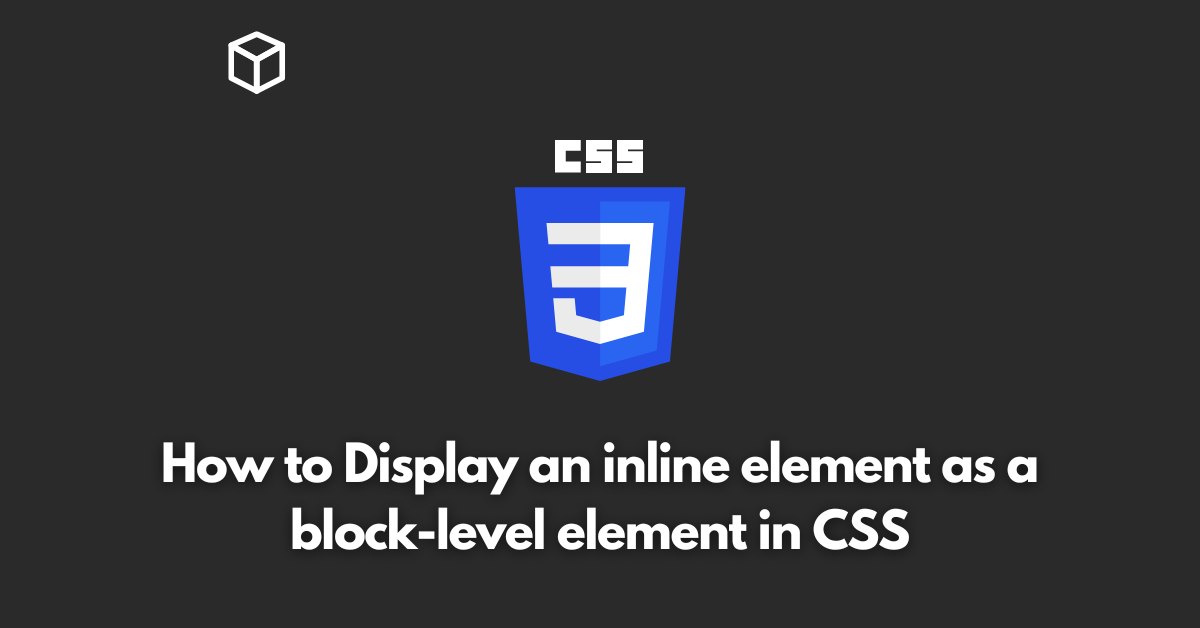CSS, or Cascading Style Sheets, is a powerful tool for web developers and designers.
It allows them to control the layout, colors, and overall presentation of their web pages.
One of the most useful features of CSS is the ability to change the display of HTML elements from inline to block-level.
In this CSS tutorial, we will discuss how to display an inline element as a block-level element in CSS.
Understanding Inline and Block-level Elements
Before we dive into the specifics of how to change the display of an element, it’s important to understand the difference between inline and block-level elements.
Inline elements are elements that are placed on a line, one after the other, without affecting the layout of the rest of the page.
Examples of inline elements include the <span> and <as> tags.
On the other hand, block-level elements are elements that take up the full width of their parent container and create a new line after them.
Examples of block-level elements include the <div> and <p> tags.
To change the display of an element, we use the display property in CSS.
The display property can take several values, including inline, block, inline-block, and none. To display an inline element as a block-level element, we set the display property to block.
For example, if we have an inline <span> element with the class example, we can change its display to block-level by using the following CSS:
.example {
display: block;
}Another way to do this is to use display:inline-block, this will give the element the characteristics of both inline and block level elements.
This can be useful in situations where you want to control the width and height of an inline element, but still want it to be inline with other elements.
Note: Changing the display of an element will also affect its default behavior.
For example, if you change an <a> element from inline to block, it will no longer be clickable.
Conclusion
CSS is a powerful tool that gives web developers and designers a great deal of control over the layout and presentation of their web pages.
The ability to change the display of HTML elements from inline to block-level is just one of many features that CSS provides.
Understanding the difference between inline and block-level elements and how to change the display of an element is an essential skill for any web developer or designer.




